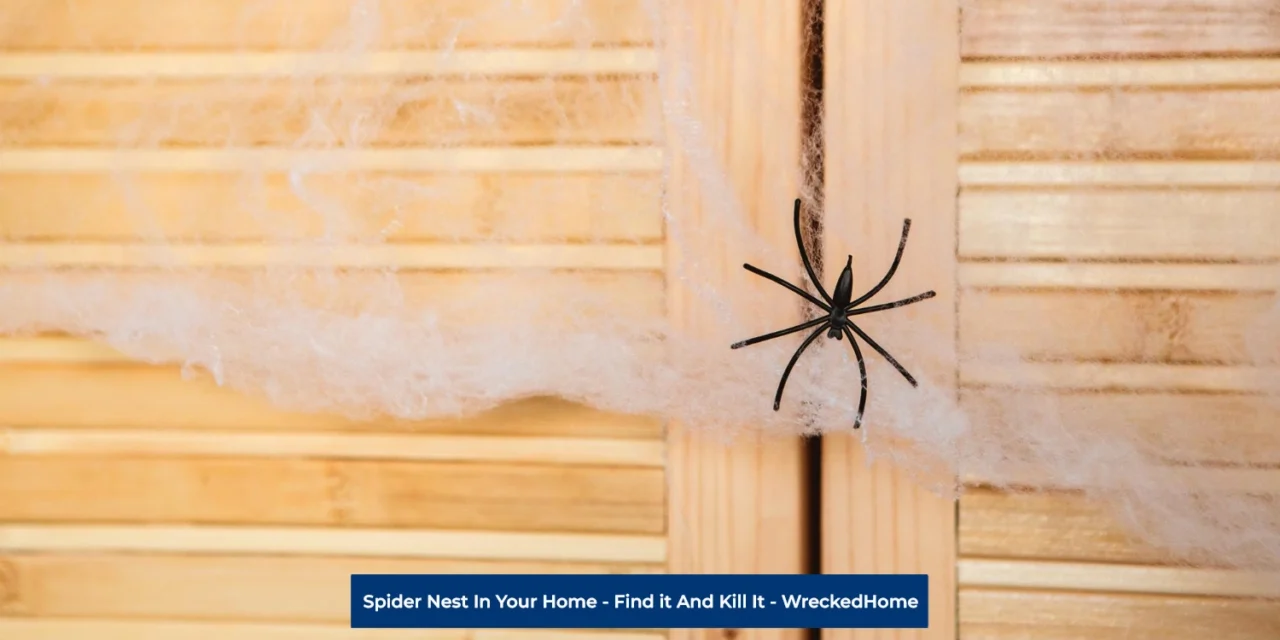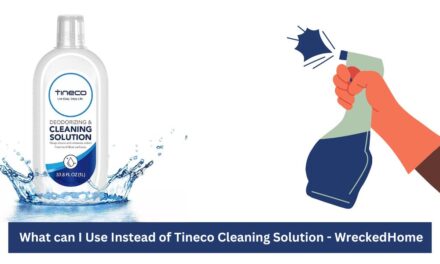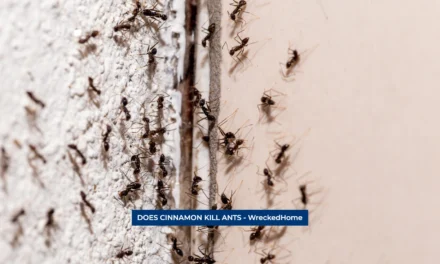Spider nests in your home can be unsettling and even potentially hazardous.
These eight-legged arachnids can be found in the darkest corners of our living spaces, lurking in basements, attics, closets, and wall crevices. While the majority of spider species are harmless, they can multiply rapidly when they establish nests. Some species can even pose health risks.
A feeling of discomfort grows if we discover a spider nest inside our home. When this happens, we must take the appropriate measures to eliminate them.
There’s a diverse array of spider species. Each has its own unique properties of nesting habits. In this comprehensive guide, we will delve into the fascinating world of spider nests, offering insight on how to find and eliminate them from our homes. If you are interested in getting rid of other pests, please see our article on ants.
So, let’s embark on the journey to uncover these hidden arachnid dwellings and learn how to ensure a spider-free living environment.
Understanding Spiders and Their Nesting Habits
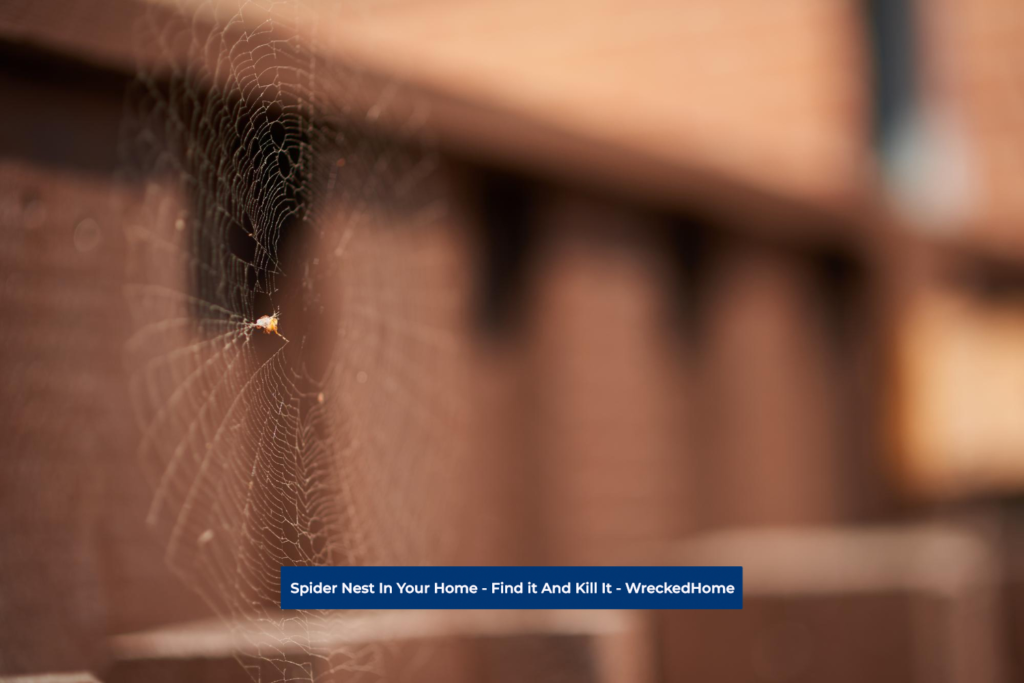
Spiders embark on their journey from egg to adulthood characterized by distinct stages of growth. It all begins with female spiders laying their eggs, often protected inside silk sacs.
When these eggs hatch, the emerging spider lings may resemble miniature versions of the adults but undergo several molts before reaching maturity.
In our homes, we’re most likely to encounter species like the common house spider, cellar spiders, therefore its necessary to know how to find and kill them.
Nesting locations in homes are typically secluded spots: behind furniture, basements, attics, and other areas offering protection from predators and harsh environmental factors. While spotting a single spider might be a random encounter, frequent sightings, especially of spider lings or egg sacs, could signal the presence of a nest, indicating a growing population right under your roof.
Signs of a Spider Nest in Your Home
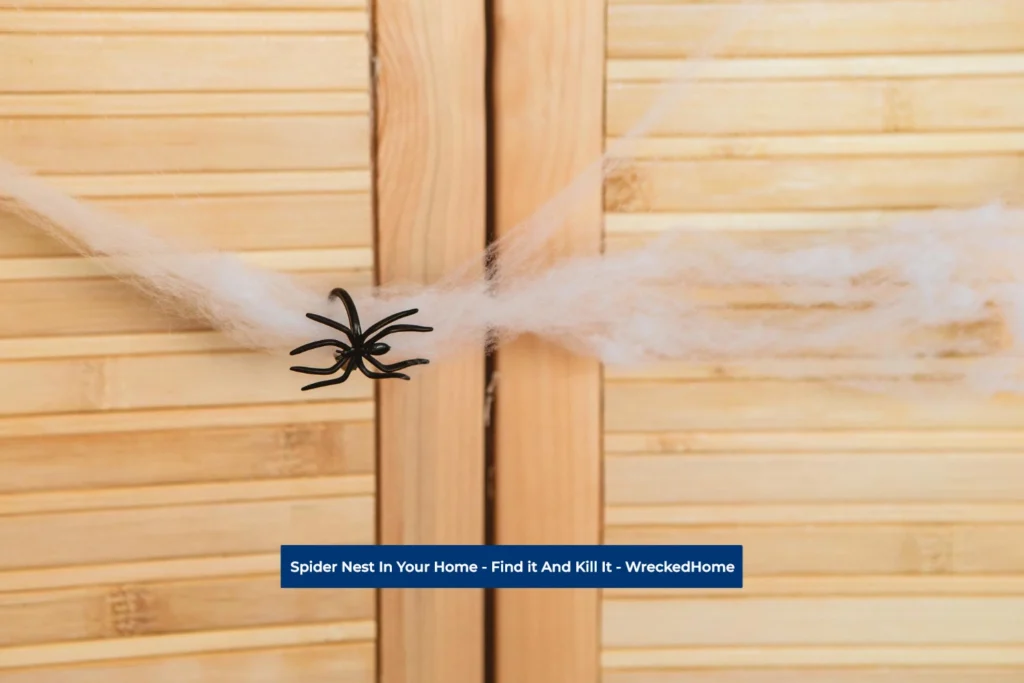
Its necessary to know the signs to identify the presence of a spider nest in your home. This involves careful observation of various visual indicators and behavioral cues exhibited by these arachnids. Some of the most common signs are:
Visual Indicators:
- Egg Sacs: Spider nests often begin with the presence of silk-woven egg sacs that has a spherical or oval shape. Depending on the species, you might find them suspended within intricate webs or tucked away in hidden corners.
- Clusters of Small Spiders: A clear sign of recently hatched spider lings is the appearance of groups of tiny spider lings. These young spiders live grouped together shortly after they emerge from the egg sac.
Frequent Spider Sightings:
- If you consistently notice spiders in a specific area over a short period in your home then it’s likely a nest is nearby. Adult spiders may be seen guarding their egg sacs or actively hunting close to their nesting site.
Web Structures:
Different spiders create various types of web structures. These are as follows:
- Orb Webs: Classic spiraled webs that are often found in gardens, but they can also appear near windows or eaves.
- Funnel Webs: Funnel webs are characterized by a funnel-like retreat where the spider waits, typically seen in grass or on the ground.
- Sheet Webs: Horizontal, sheet-like structures often found in shrubs. They are created by certain spider species.
Reaction to Changes in Lighting or Temperature
Did you know that spiders respond to changes in their surrounding environment. For instance, turning on a heater can prompt spiders to emerge from their colder hiding places, becoming more active. Similarly, an area that suddenly becomes illuminated at night can induce web-building spiders to swiftly seek shelter and conceal themselves.
Why You Should Address Spider Nests
It is very important to address and kill any spider nest in your home. If you don’t know why it is important to kill them then stick around to find out.
1. Health Concerns: Potential Bites and Allergies
One of the most important reasons for addressing spider nests in your home is health-related concerns. Although most of the spiders you encounter are harmless, a few species can deliver bites that range from mildly discomforting to medically significant.
For instance, the brown recluse and the black widow spiders, both of which can be found in certain domestic settings, possess venom that is dangerous for humans. Their bites can induce severe reactions.
Besides the danger of bites, some individuals may also suffer from allergic reactions that enforce urgency to manage spider populations. It’s crucial to note that even non-venomous spider bites can lead to secondary bacterial infection that are dangerous for humans.
2. Rapid Growth of Spider Populations
Spider nests, particularly when housing egg sacs, serve as clear indicators of an expanding spider population. A single egg sac in your house can range from a few to several hundred eggs. If left unchecked, this means that your home could soon be inundated with spiders. Taking early action is vital to prevent a single nesting spot from becoming a widespread infestation.
3. Attraction of Other Pests
All spiders are known as pests in nature that can also damage plants. Significant numbers might indicate an abundance of prey, such as flies, mosquitoes, and other small pests. While spiders help to control these populations, their presence might suggest that your home is harboring other unwelcome guests.
4. Aesthetic Concerns: Unsightly Webs
In addition to health and environmental factors, there’s an undeniable aesthetic dimension to consider. Spider webs, especially when they appear in clusters or corners of rooms, can be visually unappealing. They can detract from the cleanliness and appeal of your living spaces, creating a sense of neglect. By addressing spider nests, you ensure that your home maintains its pristine appearance, and free from the random threads and tangles of spider webs.
Visit our store for 10% off our Cleaning Products here.
5. Peace of Mind
Finally, the mere knowledge that there’s a spider nest in one’s home can be disconcerting for many individuals. For individuals with arachnophobia, this can cause distress. Acting swiftly not only safeguards the physical well-being of the home’s inhabitants, but also provides psychological comfort by alleviating the anxiety that spiders can provoke.
Safe and Effective Methods to Eliminate Spider Nests
Spiders, while beneficial in natural ecosystems, can pose challenges. In order to strike a balance between safety and effective pest control you must address these infestations effectively.
Instead of immediately resorting to drastic measures, there are proven methods that can help in eliminating spider nests without causing harm to the surrounding environment. There are common strategic methods to treat them:
Regular Cleaning and Dusting
One primary defense against spider nests is to keep your home neat and clean. Regular dusting, especially in less-frequented areas like basements, attics, and corners of rooms, can disrupt the development of spider nests.
Vacuuming can be particularly effective, as it can remove both spiders and their egg sacs. It not only eliminates spiders but also removes their egg sacs. After vacuuming, always ensure to seal and dispose of the vacuum bag outside to keep spiders away and prevent them from re-entering your living space.
Natural Repellents and Deterrents
There are various natural solutions that can deter spiders from nesting in specific areas. Essential oils is one of them as a natural remedy. A mixture of water with a few drops of peppermint, eucalyptus, or tea tree oil prepared in a spray bottle can hinder the growth of spiders. These scents are typically disliked by spiders, reducing the likelihood of them choosing those areas. These natural repellents are also a cost effective solution to treat them.
Sealing Entry Points
Prevention is often the most effective strategy. By sealing cracks, gaps in windows, and any other potential entry points, its easy to diminish the likelihood of spiders infiltrating your home. Weather stripping, door sweeps, and caulk can all be used for obstructing typical entry routes, ensuring that spiders remain outside and far from your living spaces.
Chemical Sprays and Pesticides
Although natural methods are the preferred choice, some situations might require a stronger approach. There are numerous spider sprays and pesticides readily available on the market. When using chemicals, always ensure to follow label instructions meticulously, adhere to the instructions on the product label, and keep them out of the reach of children and pets. Concentrate on treating areas where spiders are frequently spotted and always use these products in well-ventilated areas.
Professional Extermination
When confronted with an infestation that has escalated beyond your control, it might be time to call in the professionals. Pest control companies have the expertise, tools, and knowledge to proficiently eradicate spider nests while also offering guidance on averting future infestations. Their methods often combine manual removal with the application of specialized treatments, ensuring a thorough and comprehensive resolution to the problem.
Final words
In conclusion, addressing the issue of spider nests in your home is not only a matter of convenience but also a health emergency. Although spiders play a crucial role in acting as nature’s pest controllers, their infestations can lead to the following problems: health concerns, unsightly webs, and destroyed crops.
Its necessary to employ safe and effective methods such as regular cleaning, natural repellents, and sealing entry points. If you find any difficulty in killing spider nests, then the above methods will help you.
It is essential to strike a balance between nature and maintaining a healthy environment. You can also ask for professional help to create a harmonious space where humans and spiders can peacefully coexist.
For any repairs, installations, builds, or questions; We recommend you to hire a professional. Find A Pro Near You Here!

